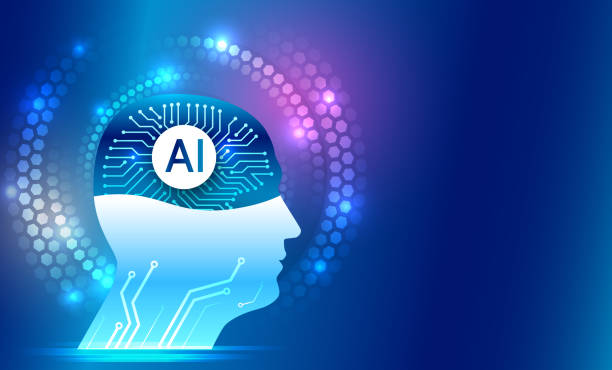Introduction to On-Page SEO and Its Importance
![]()
In today’s digital world, visibility among the vast amount of information is of vital importance.
#On-page SEO, as one of the main pillars of #Search Engine Optimization (SEO), is designed precisely for this purpose.
On-page SEO refers to the set of activities performed within your website to improve its ranking in search results. These actions include optimizing content, site structure, and technical aspects, all of which together help search engines better understand your content and recognize its value.
The importance of on-page SEO goes beyond mere ranking; this approach also focuses on improving user experience, causing visitors to spend more time on your site.
For example, if your content is well-organized and users can easily find the information they are looking for, their likelihood of returning to your site increases.
This is an important educational and analytical step for any website seeking organic growth. Without sufficient attention to on-page SEO, even the best content may never reach its audience.
Therefore, understanding the principles of on-page SEO and continuously applying them is the cornerstone of any successful digital marketing strategy.
This is a comprehensive guide to understanding why this part of SEO is important.
A thought-provoking question in this regard is whether one can succeed without on-page SEO, solely with powerful backlinks? The answer is definitely no; because the foundation of any website is its internal structure and content.
Are you losing business opportunities due to an outdated website? With Rasawave, permanently solve the problem of not attracting potential customers through your website!
✅ Attract more high-quality leads
✅ Increase brand credibility in the eyes of customers
⚡ Get free corporate website design consultation
Keyword Research for On-Page SEO

To begin any activity in the field of #On-page SEO, the first and most important step is #keyword research.
This stage is the cornerstone of all content and optimization strategies.
Keywords are phrases that users use in search engines to find specific information, products, or services. The goal of keyword research is to identify these phrases and understand the user’s intent behind each search.
Comprehensive research includes finding keywords with high search volume, suitable competition, and relevance to your business.
Various tools such as Google Keyword Planner, Ahrefs, Semrush, and Moz Keyword Explorer can assist in this process.
After identifying primary keywords, you should also find related keywords (LSI keywords) and long-tail keywords.
These words help you produce richer and more comprehensive content that covers a wider range of searches.
Understanding the type of content needed for each keyword, such as whether the user is looking for explanatory, educational, or product purchase information, is very important.
This approach allows you to create more targeted content.
On-page SEO without the right keywords is like building a house without a blueprint.
Accurate keyword research is your roadmap for success in internal site optimization. This specialized stage requires precise analysis, and its results directly impact the quality and effectiveness of your content.
Optimizing Title Tags and Meta Descriptions
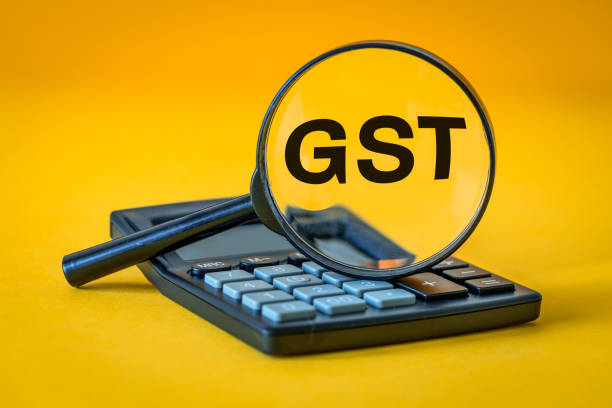
After identifying keywords, one of the most crucial parts of #On-page SEO is optimizing #title tags and #meta descriptions.
The Title Tag is the most visible element in search results that informs search engines and users about what your page is about. This tag also appears in the browser’s title bar.
Optimizing it involves placing the main keyword at the beginning of the title, keeping it short (around 50-60 characters), and making it appealing and descriptive to encourage users to click.
The Meta Description is a brief summary of the page’s content that appears below the title in search results.
Although meta descriptions do not directly affect ranking, they play a very important role in click-through rate (CTR).
A good meta description should contain relevant keywords, be engaging and persuasive, and encourage users to visit the page. Its standard length is around 150-160 characters.
These elements are users’ first impression of your website in the SERP (Search Engine Results Pages) and provide an opportunity for analytical insights and guidance for users.
On-page SEO without proper optimization of these elements is incomplete and can lose many opportunities to attract traffic.
Key Elements of Title Tag and Meta Description
| Element | Description | Optimization Tips |
|---|---|---|
| Title Tag | The name of your page that appears in search results and browser tab. | Main keyword at the beginning, 50-60 characters long, engaging and includes brand name. |
| Meta Description | A short summary of the page’s content below the title in search results. | Contains keywords, 150-160 characters long, includes a call to action (CTA). |
URL Structure and Internal Links

URL structure and internal links are two other important factors in #On-page SEO that are often overlooked but significantly impact how search engines understand and rank your site.
An optimized URL should be short, readable, descriptive, and contain the page’s main keyword. Avoiding special characters, meaningless numbers, and complex parameters in the URL helps improve its readability.
A hierarchical and logical URL structure (e.g., `yourdomain.com/category/subcategory/page-name`) not only for users is clearer, but also helps search engines understand your site’s structure.
Internal Links are links that connect different pages within your website to each other.
These links have several major benefits for on-page SEO:
First, they help search engines discover new pages and understand the thematic connection between your content.
Second, they distribute authority (Page Authority) throughout the site and help your more important pages achieve better rankings.
Third, they improve user experience; because users can easily navigate between related content and gain more information.
When creating internal links, use relevant anchor text containing keywords.
This is a crucial educational step that can be very effective in improving your site’s crawlability and indexability. These specialized actions in on-page SEO directly contribute to overall site optimization and increase its visibility in search results.
The stronger your internal linking structure, the easier it is for search engines to understand and value your content.
Does your current corporate website not reflect your brand’s credibility and power as it should? Rasawave solves this challenge for you with professional corporate website design.
✅ Increase credibility and visitor trust
✅ Target and attract more customers
⚡ Click for free consultation!
Content Optimization for On-Page SEO
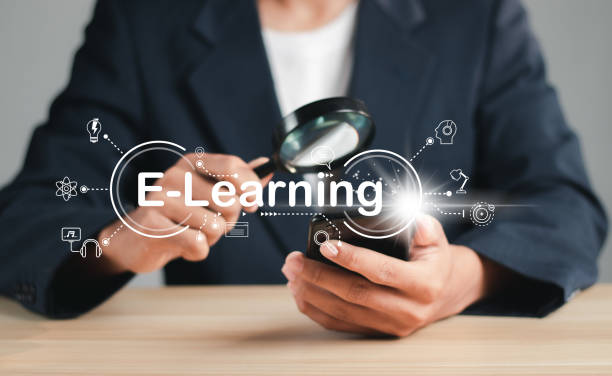
When it comes to #On-page SEO, content is king. Producing high-quality content optimized for search engines and users, is one of the most important pillars of success in on-page SEO.
Your content should not only provide useful and accurate information, but also be written in a way that naturally and logically incorporates your target keywords. Strictly avoid keyword stuffing, as this will not only harm your ranking, but also severely diminish user experience.
Instead, place keywords naturally within the text, subheadings, paragraphs, and conclusions.
In addition to keywords, content quality is also of high importance.
Your content should be comprehensive, in-depth, and address user needs.
Specialized content that answers user questions, solves their problems, and provides unique information, has a higher chance of ranking well. Use images, videos, and infographics to enrich content and increase its appeal.
These visual elements can increase user engagement rates and extend their time on the page, both of which are positive signals for search engines.
Producing educational, explanatory and even entertaining content can help attract a wider audience.
On-page SEO without great content, is almost meaningless.
This section requires an analytical and planned approach to meet the needs of both the audience and Google’s algorithms.
The Importance of Heading Tags (H1-H6) in On-Page SEO

Heading tags, which range from H1 to H6, are important structural elements in #On-page SEO and content readability.
These tags help search engines and users understand your content’s structure and identify its different sections. H1 is the most important heading tag and should only be used once per page, usually for the main title of the article or page.
This tag should contain the main keyword of the page and clearly state the overall topic of the content.
H2 to H6 tags are used to divide your content into sub-sections and subheadings.
Proper use of these tags not only helps improve readability for users (they can quickly find the sections they need), but also assists search engines in understanding the hierarchy of information and the connection between different parts of the content.
Placing relevant keywords or LSI keywords in heading tags can help strengthen your page’s thematic relevance. This is a key guide for better content organization.
A logical and hierarchical heading structure, for example H1 -> H2 -> H3 -> H2, makes your content appear more organized and earns a better score in on-page SEO.
Avoid excessive use of these tags or using them solely for styling (instead of organization).
Remember that each heading tag should briefly explain the topic of its respective section.
This is an explanatory and important optimization element that should not be overlooked.
Through proper use of heading tags, specialized content can also be presented in a readable and engaging manner.
Optimizing Images and Multimedia Files
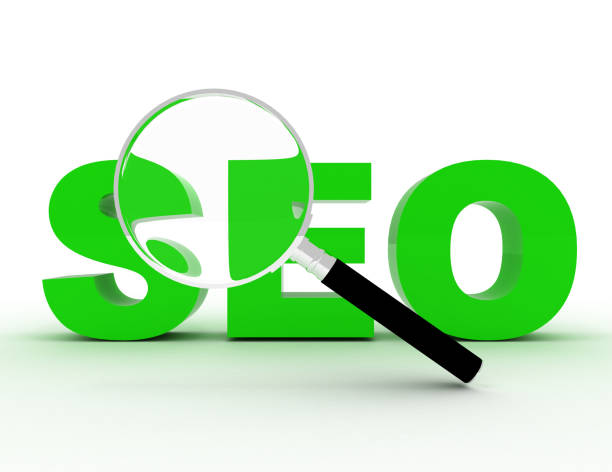
Images and other multimedia files are an integral part of a modern website and play a significant role in #On-page SEO.
Optimizing images not only helps improve page loading speed, but also allows search engines to understand and index your visual content. The first step in image optimization, is compressing them without a noticeable loss in quality.
Online tools and WordPress plugins can assist in this regard.
The second step, is to use descriptive file names and containing keywords (e.g., `seo-dakheli-image.jpg` instead of `IMG_001.jpg`).
But the most important aspect in this section, is the use of Alt Text.
Alt text is a textual description for the image that is displayed when the image fails to load or for visually impaired users (via Screen Readers). This text should accurately describe the image and, if necessary, contain relevant keywords.
This is an important educational step to ensure accessibility and complete optimization.
For video files, use optimized encodings and suitable hosting platforms (such as YouTube) that perform the necessary optimizations themselves.
Also, you can use Video Schema Markup to help search engines better understand your video content.
On-page SEO includes all content aspects of the site, and images are no exception. Paying attention to these details can make a significant difference in your site’s overall SEO performance.
This is a specialized guide for improving site speed and understanding visual content.
Methods for Image Optimization for SEO
| Element | Importance | Optimization Tips |
|---|---|---|
| File Name | Helps search engines understand content before loading. | Descriptive, contains keyword, use hyphens instead of underscores. |
| Alt Text | Explains the image for search engines and visually impaired users, increases ranking in image search. | Descriptive and accurate, contains main keyword (naturally), short and useful. |
| Size and Dimensions | Direct impact on page loading speed, an important factor in user experience and ranking. | Compress images, use modern formats (WebP), set appropriate dimensions. |
Site Loading Speed and User Experience
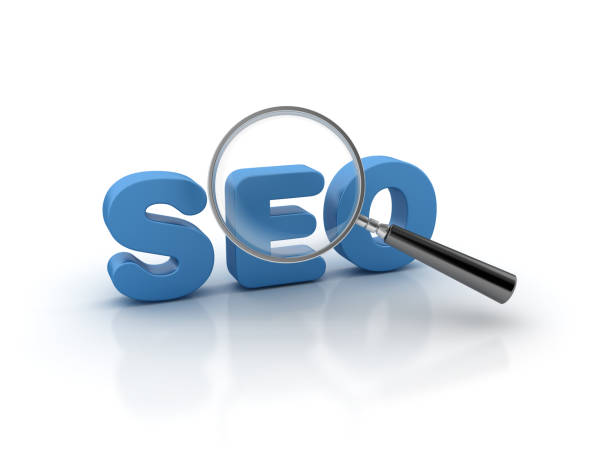
Site loading speed and User Experience (UX), are two vital factors in #On-page SEO that have gained increasing importance.
Search engines, especially Google, consider site speed as a ranking factor. The reason is clear: users are more satisfied with sites that load quickly.
If your site is slow, users will leave it before the page fully loads (high Bounce Rate) which is a negative signal for search engines.
Tools such as Google PageSpeed Insights and GTmetrix can help you in analyzing site speed and identifying problems.
In addition to speed, the overall user experience of the site also plays a very important role in on-page SEO.
A site with good UX, should have easy navigation, responsive design for correct display on all devices, and organized and readable content.
The goal is that users can easily access what they need, and enjoy their visit. This includes attractive visual design, readable fonts, and appropriate spacing between elements.
Analytical insights into user behavior through tools such as Google Analytics can help you in improving UX.
Improving speed and UX is an explanatory and guiding approach that directly impacts ranking and conversion rates.
On-page SEO, beyond keywords, is about providing the best possible experience to the user.
Are you tired of your e-commerce website not generating as much revenue for you as its potential? Rasawave, specializing in professional e-commerce website design, permanently solves this problem!
✅ Increase sales rate and revenue
✅ High loading speed and unparalleled user experience
⚡ Get free e-commerce website design consultation
The Role of Structured Data (Schema Markup) in On-Page SEO
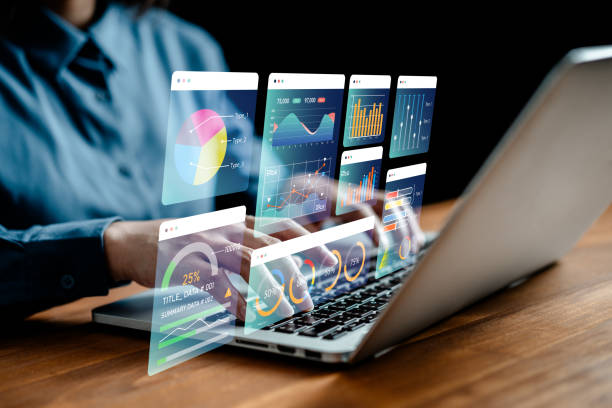
Structured data or Schema Markup, is an advanced and very powerful component in #On-page SEO that helps search engines understand your content more deeply and accurately.
Schema markup consists of codes added to your site’s HTML that provide specific information about the page’s content (such as product, event, article, review, etc.) to search engines. This information helps search engines display Rich Snippets in the SERP.
For example, if you have a recipe on your website, you can use schema, to provide information such as cooking time, calories, and user ratings to the search engine, so these are visible in search results.
Displaying rich snippets in search results, can significantly increase your click-through rate (CTR), because your page is seen more prominently among other results.
This is an educational and specialized process that requires precision in implementation.
Schema.org is a standard collection of schema codes that is supported by major search engines such as Google, Bing, Yahoo, and Yandex.
Proper use of schema, is an analytical approach that can give your On-page SEO a significant advantage.
This not only helps you gain more visibility, but also assures search engines that your content is relevant and authoritative.
Not paying attention to schema markup, is missing a big opportunity to increase visibility in search results.
Monitoring and Analyzing On-Page SEO Performance

After implementing all aspects of #On-page SEO, the final and continuous step, is #monitoring and #analysis of performance.
SEO is not a one-time process, but a continuous effort that requires ongoing monitoring and adjustments. Tools such as Google Analytics, Google Search Console, and other paid SEO tools (such as Ahrefs, Semrush) are essential for this purpose.
Google Search Console provides you with vital information about how your site is seen by Google, the keywords you rank for, crawl errors, and rich snippet display.
Google Analytics helps you understand user behavior on your site, including bounce rate, time spent on page, and user journey.
By analyzing this data, you can identify the strengths and weaknesses of your on-page SEO strategy and make data-driven decisions to improve performance. This is an informational and analytical stage that should be performed regularly.
For example, if you observe that a particular page has a high bounce rate, it may indicate a problem in content, loading speed or user experience that requires closer examination.
Regular monitoring allows you to react to changes in Google’s algorithms and keep your site always optimized.
On-page SEO without continuous analysis, is like driving without looking at a map. This educational section teaches you how to use data to elevate your site’s optimization.
Ultimately, this process helps you continuously progress and improve your search engine rankings.
Frequently Asked Questions
| Question | Answer |
|---|---|
| What is On-page SEO? | On-page SEO refers to a set of actions performed within your website to improve its ranking in search engine results. This includes optimizing content, site structure, and HTML code. |
| Why is On-page SEO important? | On-page SEO helps search engines understand your page’s content and determine whether your content is relevant to searchers. It is the foundation of any successful SEO strategy. |
| What are the key elements of On-page SEO? | Page title (Title Tag), Meta Description, keyword usage, image optimization, heading structure (H1, H2, …), internal linking, and content quality are key elements. |
| How to optimize the page title (Title Tag)? | The page title should include the main keyword, be attractive and encouraging for clicks, and its length should be between 50 to 60 characters (or appropriate pixels) to be fully displayed in search results. |
| What role does Meta Description play in On-page SEO? | Meta description is a summary of the page content that is displayed below the title in search results. Although it does not directly affect ranking, it helps SEO by increasing click-through rate (CTR). |
| What is the importance of using heading structure (H1, H2, H3) in On-page SEO? | Headings structure the page content and make it easier to read. H1 is usually the main title of the page and should include the keyword. H2 and H3 are used to organize subsections and help search engines understand the content hierarchy. |
| How to effectively use keywords in content? | Keywords should be used naturally and logically throughout the content, including the introduction, body, and conclusion. Avoid excessive keyword stuffing. |
| What steps are involved in optimizing images for On-page SEO? | It includes compressing images to reduce size, using descriptive file names, adding appropriate Alt Text, and optimizing image title and description. Alt Text is crucial for accessibility and helping search engines understand image content. |
| What is Internal Linking and what are its benefits? | Internal linking means creating links from one page on your website to another page on the same website. This helps users navigate your site easily, distributes page authority throughout the site, and helps search engines better understand your site’s structure. |
| What is the importance of content quality in On-page SEO? | High-quality, accurate, comprehensive, and valuable content for users, is the cornerstone of On-page SEO. Search engines prefer content that meets user needs. Quality content leads to longer user dwell time on the site (Dwell Time) and reduced bounce rate, which are positive SEO signals. |
And other services of Rasawave Advertising Agency in the field of advertising
Smart Marketing Automation: Designed for businesses looking to manage campaigns through marketing automation.
Smart Content Strategy: Transform SEO ranking improvement with the help of intelligent data analysis.
Smart Google Ads: An innovative platform to improve sales increase with attractive UI design.
Smart Website Development: An effective tool for user interaction with the help of user experience customization.
Smart Data Analysis: Transform SEO ranking improvement with the help of marketing automation.
And over hundreds of other services in the field of internet advertising, advertising consultation, and organizational solutions
Internet Advertising | Advertising Strategy | Advertorial
Sources
Rocket On-Page SEO Guide
Faradars On-Page SEO Training
Mizbanfa On-Page SEO
Virgool Comprehensive On-Page SEO Guide
? For your business to leap forward in the digital world and achieve peaks of success, Rasawave Afarin Digital Marketing Agency, with expertise in user-friendly website design and innovative online strategies, is your comprehensive solution.
📍 Tehran, Mirdamad Street, next to Bank Markazi, Kazeroon Janoubi Alley, Ramin Alley No. 6


